Economic Value Added, Surplus Utilisation & Break-Even Analysis Report
VerifiedAdded on 2024/05/31
|7
|930
|203
Report
AI Summary
This assignment provides a comprehensive financial analysis, focusing on Economic Value Added (EVA) for CompSoft Ltd and break-even analysis for a petrol sales scenario. The EVA calculation details revenue, costs, and resulting added value, with recommendations for surplus money utilization. Percentage calculations highlight cost structures for spare parts and software sales. The break-even analysis determines the point at which total revenue equals total costs, including fixed costs, variable costs, and sales prices. The report includes calculations for break-even point in units and monetary value, profit/loss analysis at different sales volumes, and safety margin calculations. It also contains a graph illustrating the break-even level. This solved assignment is available on Desklib, along with numerous other solved assignments and study resources.
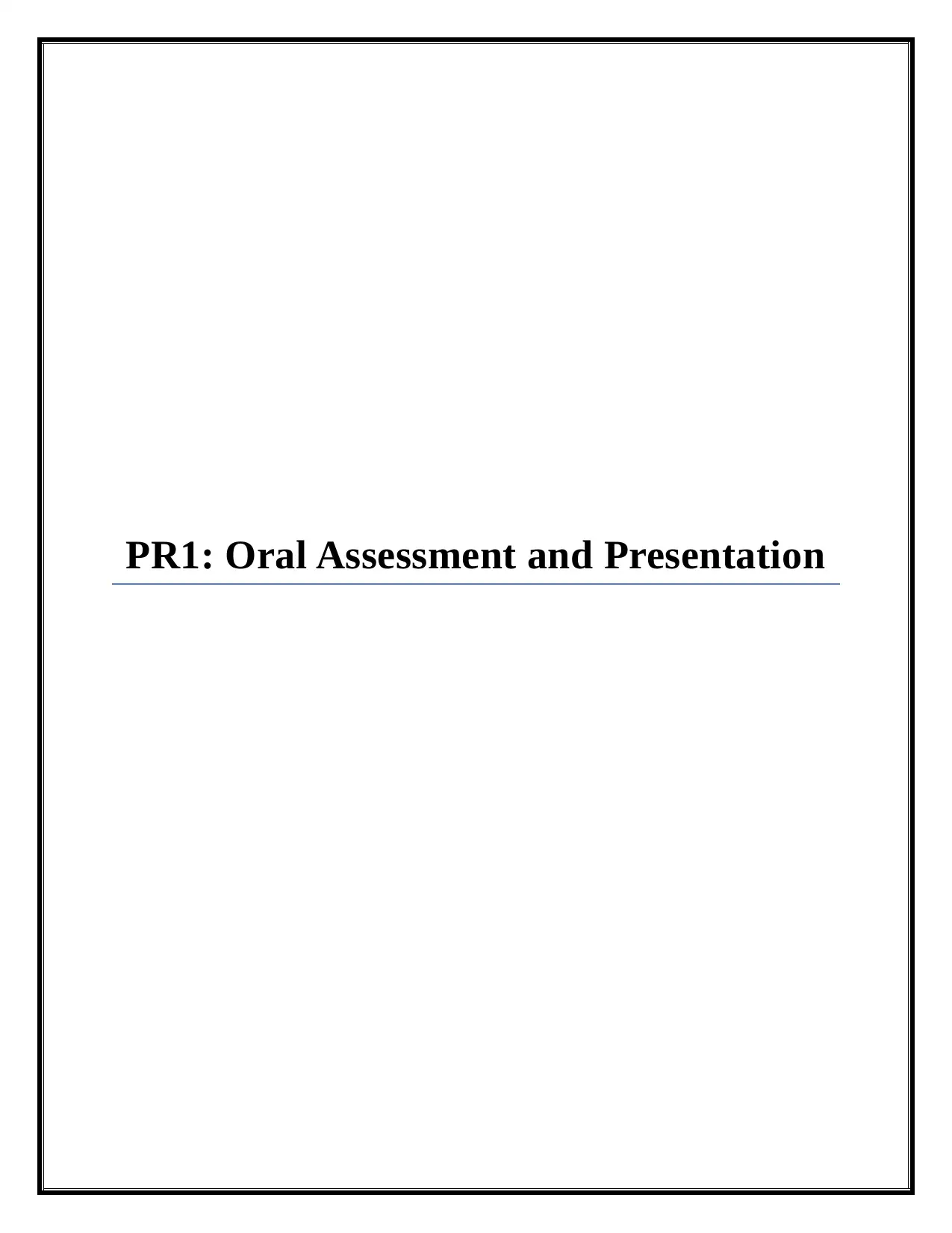
PR1: Oral Assessment and Presentation
Paraphrase This Document
Need a fresh take? Get an instant paraphrase of this document with our AI Paraphraser
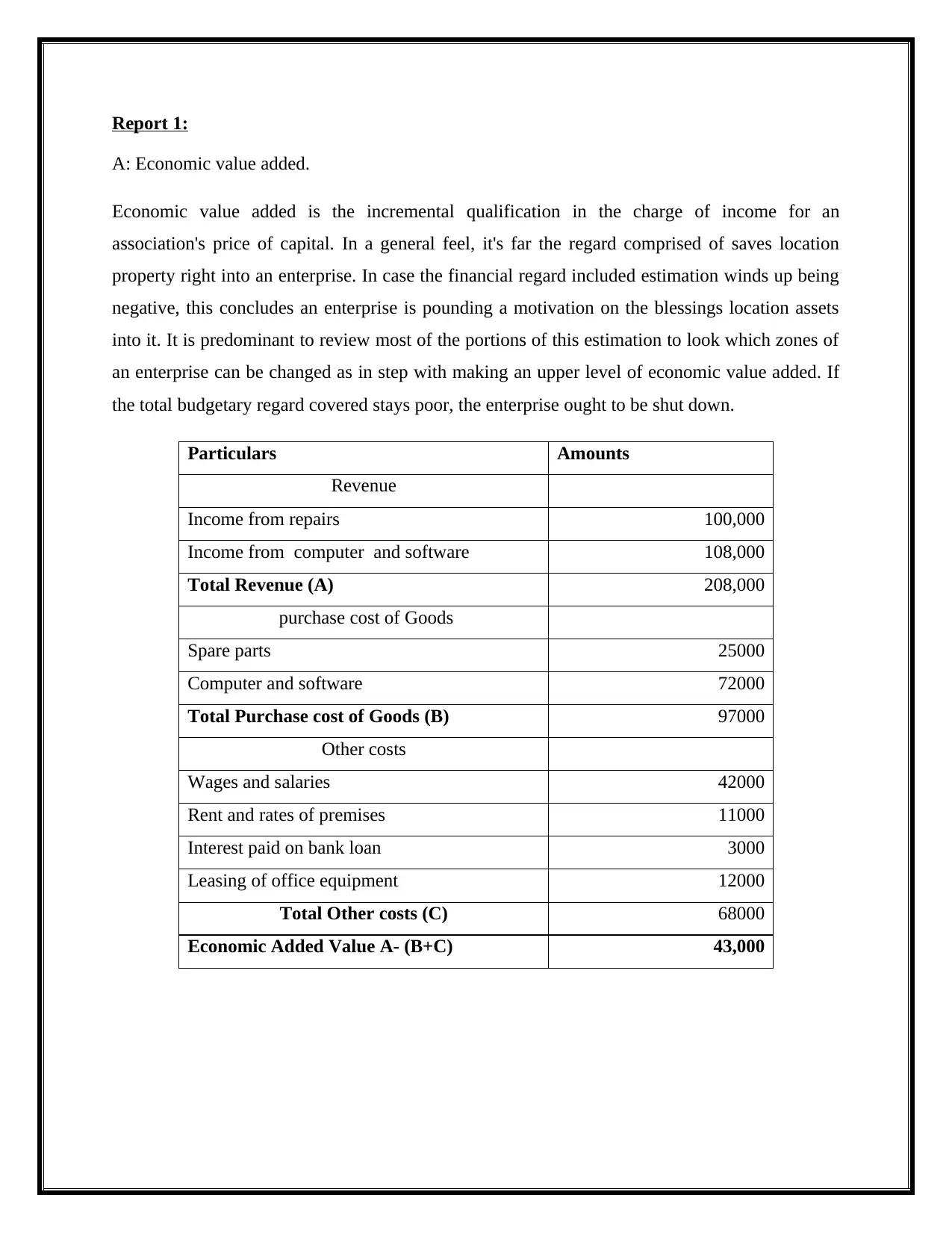
Report 1:
A: Economic value added.
Economic value added is the incremental qualification in the charge of income for an
association's price of capital. In a general feel, it's far the regard comprised of saves location
property right into an enterprise. In case the financial regard included estimation winds up being
negative, this concludes an enterprise is pounding a motivation on the blessings location assets
into it. It is predominant to review most of the portions of this estimation to look which zones of
an enterprise can be changed as in step with making an upper level of economic value added. If
the total budgetary regard covered stays poor, the enterprise ought to be shut down.
Particulars Amounts
Revenue
Income from repairs 100,000
Income from computer and software 108,000
Total Revenue (A) 208,000
purchase cost of Goods
Spare parts 25000
Computer and software 72000
Total Purchase cost of Goods (B) 97000
Other costs
Wages and salaries 42000
Rent and rates of premises 11000
Interest paid on bank loan 3000
Leasing of office equipment 12000
Total Other costs (C) 68000
Economic Added Value A- (B+C) 43,000
A: Economic value added.
Economic value added is the incremental qualification in the charge of income for an
association's price of capital. In a general feel, it's far the regard comprised of saves location
property right into an enterprise. In case the financial regard included estimation winds up being
negative, this concludes an enterprise is pounding a motivation on the blessings location assets
into it. It is predominant to review most of the portions of this estimation to look which zones of
an enterprise can be changed as in step with making an upper level of economic value added. If
the total budgetary regard covered stays poor, the enterprise ought to be shut down.
Particulars Amounts
Revenue
Income from repairs 100,000
Income from computer and software 108,000
Total Revenue (A) 208,000
purchase cost of Goods
Spare parts 25000
Computer and software 72000
Total Purchase cost of Goods (B) 97000
Other costs
Wages and salaries 42000
Rent and rates of premises 11000
Interest paid on bank loan 3000
Leasing of office equipment 12000
Total Other costs (C) 68000
Economic Added Value A- (B+C) 43,000
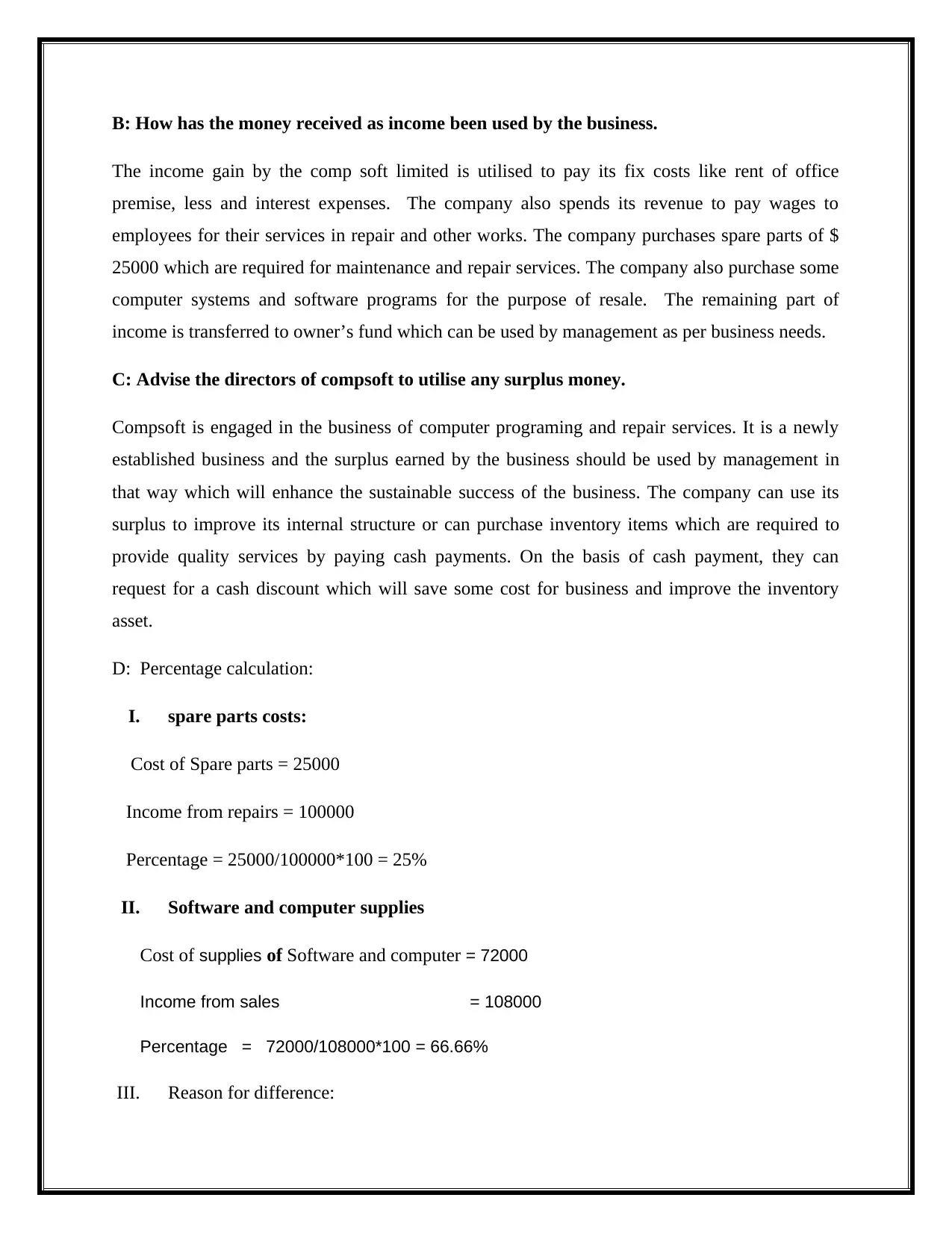
B: How has the money received as income been used by the business.
The income gain by the comp soft limited is utilised to pay its fix costs like rent of office
premise, less and interest expenses. The company also spends its revenue to pay wages to
employees for their services in repair and other works. The company purchases spare parts of $
25000 which are required for maintenance and repair services. The company also purchase some
computer systems and software programs for the purpose of resale. The remaining part of
income is transferred to owner’s fund which can be used by management as per business needs.
C: Advise the directors of compsoft to utilise any surplus money.
Compsoft is engaged in the business of computer programing and repair services. It is a newly
established business and the surplus earned by the business should be used by management in
that way which will enhance the sustainable success of the business. The company can use its
surplus to improve its internal structure or can purchase inventory items which are required to
provide quality services by paying cash payments. On the basis of cash payment, they can
request for a cash discount which will save some cost for business and improve the inventory
asset.
D: Percentage calculation:
I. spare parts costs:
Cost of Spare parts = 25000
Income from repairs = 100000
Percentage = 25000/100000*100 = 25%
II. Software and computer supplies
Cost of supplies of Software and computer = 72000
Income from sales = 108000
Percentage = 72000/108000*100 = 66.66%
III. Reason for difference:
The income gain by the comp soft limited is utilised to pay its fix costs like rent of office
premise, less and interest expenses. The company also spends its revenue to pay wages to
employees for their services in repair and other works. The company purchases spare parts of $
25000 which are required for maintenance and repair services. The company also purchase some
computer systems and software programs for the purpose of resale. The remaining part of
income is transferred to owner’s fund which can be used by management as per business needs.
C: Advise the directors of compsoft to utilise any surplus money.
Compsoft is engaged in the business of computer programing and repair services. It is a newly
established business and the surplus earned by the business should be used by management in
that way which will enhance the sustainable success of the business. The company can use its
surplus to improve its internal structure or can purchase inventory items which are required to
provide quality services by paying cash payments. On the basis of cash payment, they can
request for a cash discount which will save some cost for business and improve the inventory
asset.
D: Percentage calculation:
I. spare parts costs:
Cost of Spare parts = 25000
Income from repairs = 100000
Percentage = 25000/100000*100 = 25%
II. Software and computer supplies
Cost of supplies of Software and computer = 72000
Income from sales = 108000
Percentage = 72000/108000*100 = 66.66%
III. Reason for difference:
⊘ This is a preview!⊘
Do you want full access?
Subscribe today to unlock all pages.

Trusted by 1+ million students worldwide
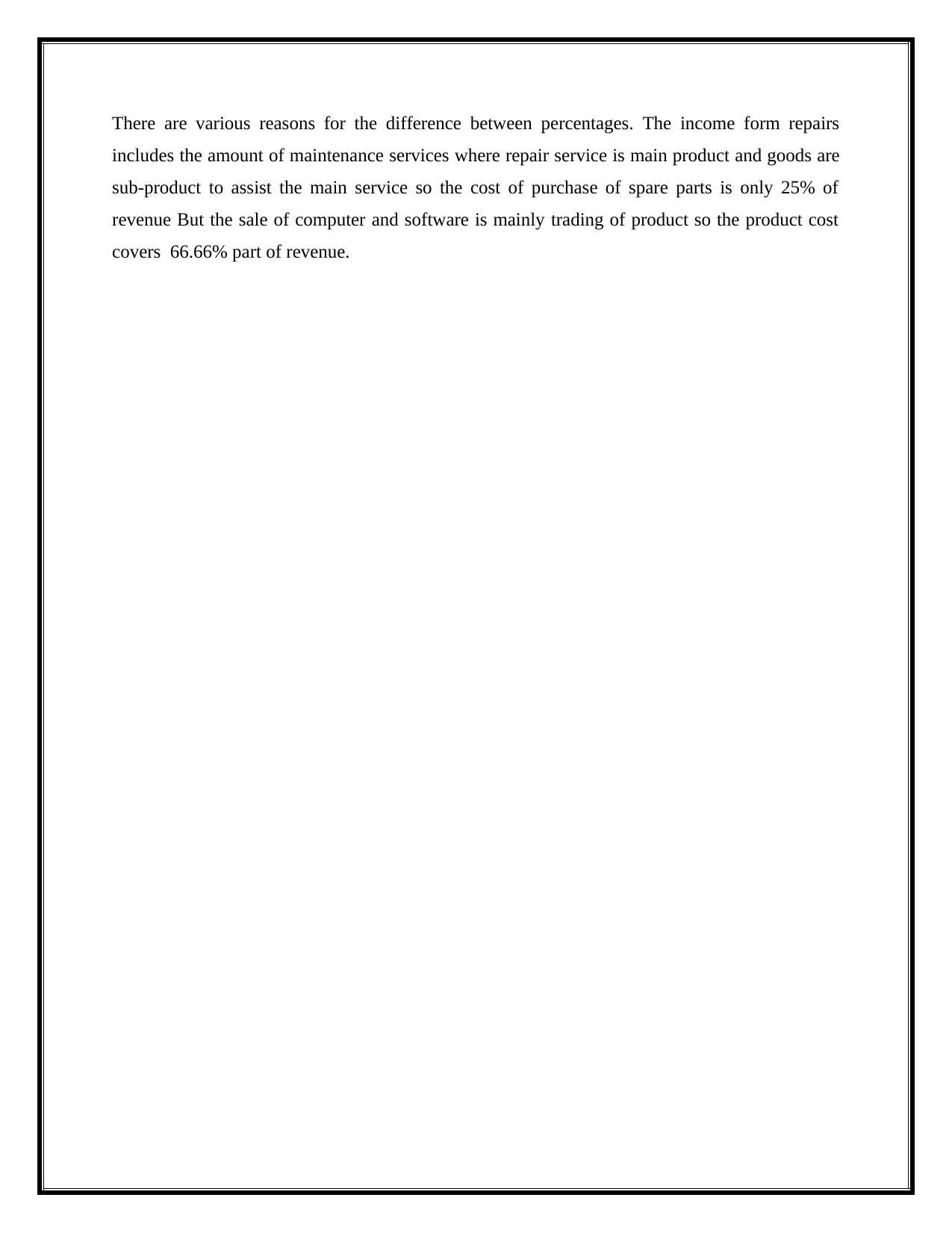
There are various reasons for the difference between percentages. The income form repairs
includes the amount of maintenance services where repair service is main product and goods are
sub-product to assist the main service so the cost of purchase of spare parts is only 25% of
revenue But the sale of computer and software is mainly trading of product so the product cost
covers 66.66% part of revenue.
includes the amount of maintenance services where repair service is main product and goods are
sub-product to assist the main service so the cost of purchase of spare parts is only 25% of
revenue But the sale of computer and software is mainly trading of product so the product cost
covers 66.66% part of revenue.
Paraphrase This Document
Need a fresh take? Get an instant paraphrase of this document with our AI Paraphraser
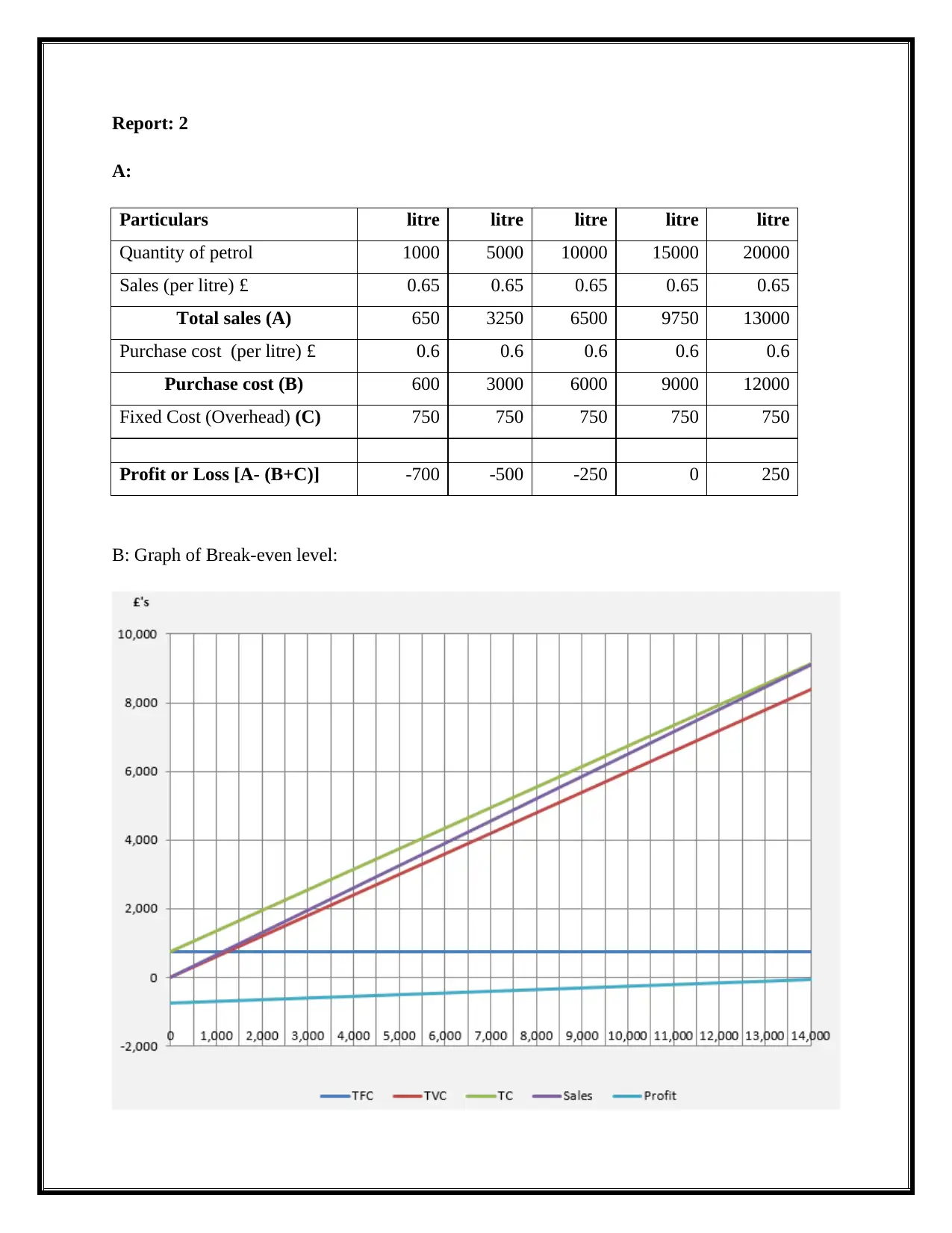
Report: 2
A:
Particulars litre litre litre litre litre
Quantity of petrol 1000 5000 10000 15000 20000
Sales (per litre) £ 0.65 0.65 0.65 0.65 0.65
Total sales (A) 650 3250 6500 9750 13000
Purchase cost (per litre) £ 0.6 0.6 0.6 0.6 0.6
Purchase cost (B) 600 3000 6000 9000 12000
Fixed Cost (Overhead) (C) 750 750 750 750 750
Profit or Loss [A- (B+C)] -700 -500 -250 0 250
B: Graph of Break-even level:
A:
Particulars litre litre litre litre litre
Quantity of petrol 1000 5000 10000 15000 20000
Sales (per litre) £ 0.65 0.65 0.65 0.65 0.65
Total sales (A) 650 3250 6500 9750 13000
Purchase cost (per litre) £ 0.6 0.6 0.6 0.6 0.6
Purchase cost (B) 600 3000 6000 9000 12000
Fixed Cost (Overhead) (C) 750 750 750 750 750
Profit or Loss [A- (B+C)] -700 -500 -250 0 250
B: Graph of Break-even level:
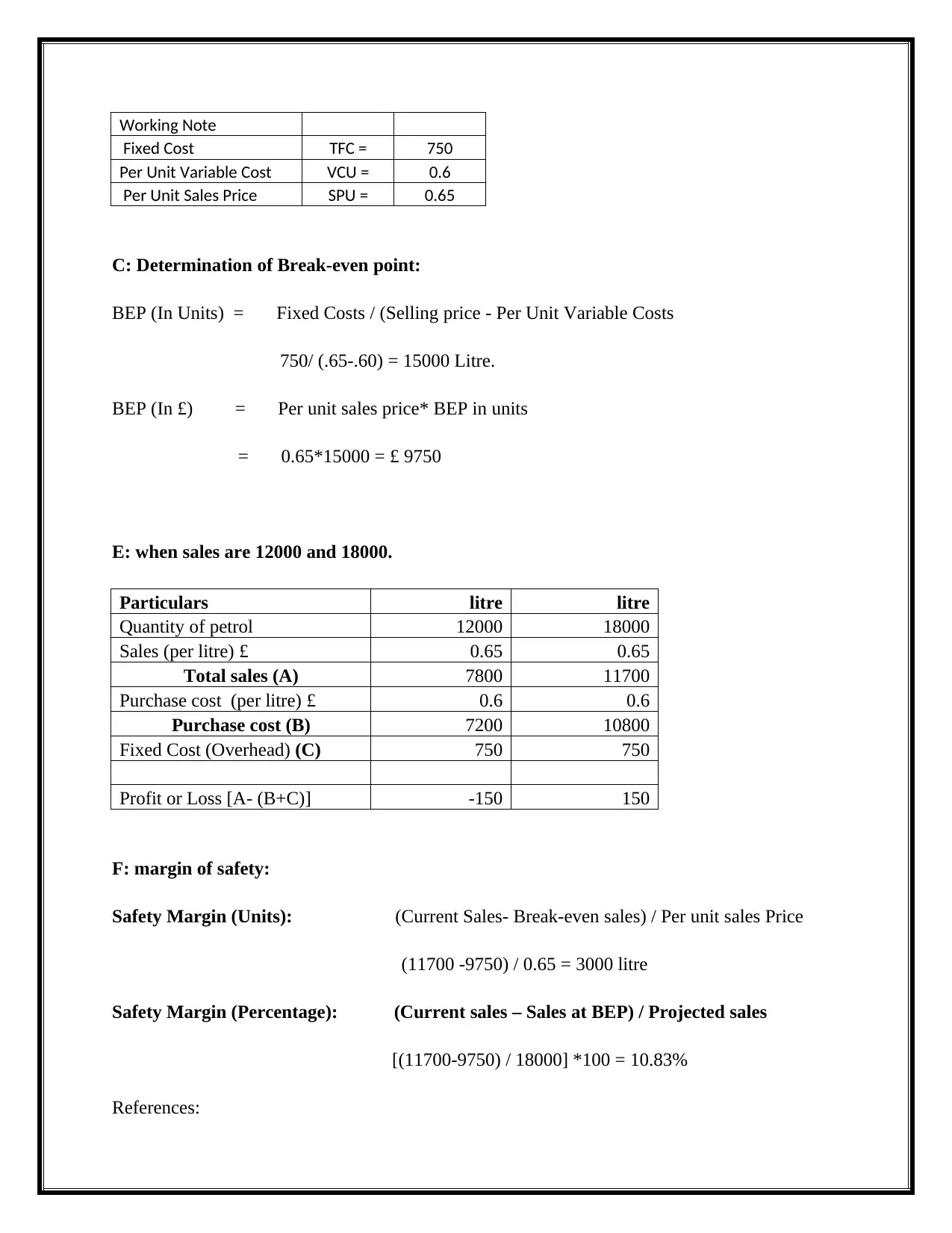
Working Note
Fixed Cost TFC = 750
Per Unit Variable Cost VCU = 0.6
Per Unit Sales Price SPU = 0.65
C: Determination of Break-even point:
BEP (In Units) = Fixed Costs / (Selling price - Per Unit Variable Costs
750/ (.65-.60) = 15000 Litre.
BEP (In £) = Per unit sales price* BEP in units
= 0.65*15000 = £ 9750
E: when sales are 12000 and 18000.
Particulars litre litre
Quantity of petrol 12000 18000
Sales (per litre) £ 0.65 0.65
Total sales (A) 7800 11700
Purchase cost (per litre) £ 0.6 0.6
Purchase cost (B) 7200 10800
Fixed Cost (Overhead) (C) 750 750
Profit or Loss [A- (B+C)] -150 150
F: margin of safety:
Safety Margin (Units): (Current Sales- Break-even sales) / Per unit sales Price
(11700 -9750) / 0.65 = 3000 litre
Safety Margin (Percentage): (Current sales – Sales at BEP) / Projected sales
[(11700-9750) / 18000] *100 = 10.83%
References:
Fixed Cost TFC = 750
Per Unit Variable Cost VCU = 0.6
Per Unit Sales Price SPU = 0.65
C: Determination of Break-even point:
BEP (In Units) = Fixed Costs / (Selling price - Per Unit Variable Costs
750/ (.65-.60) = 15000 Litre.
BEP (In £) = Per unit sales price* BEP in units
= 0.65*15000 = £ 9750
E: when sales are 12000 and 18000.
Particulars litre litre
Quantity of petrol 12000 18000
Sales (per litre) £ 0.65 0.65
Total sales (A) 7800 11700
Purchase cost (per litre) £ 0.6 0.6
Purchase cost (B) 7200 10800
Fixed Cost (Overhead) (C) 750 750
Profit or Loss [A- (B+C)] -150 150
F: margin of safety:
Safety Margin (Units): (Current Sales- Break-even sales) / Per unit sales Price
(11700 -9750) / 0.65 = 3000 litre
Safety Margin (Percentage): (Current sales – Sales at BEP) / Projected sales
[(11700-9750) / 18000] *100 = 10.83%
References:
⊘ This is a preview!⊘
Do you want full access?
Subscribe today to unlock all pages.

Trusted by 1+ million students worldwide
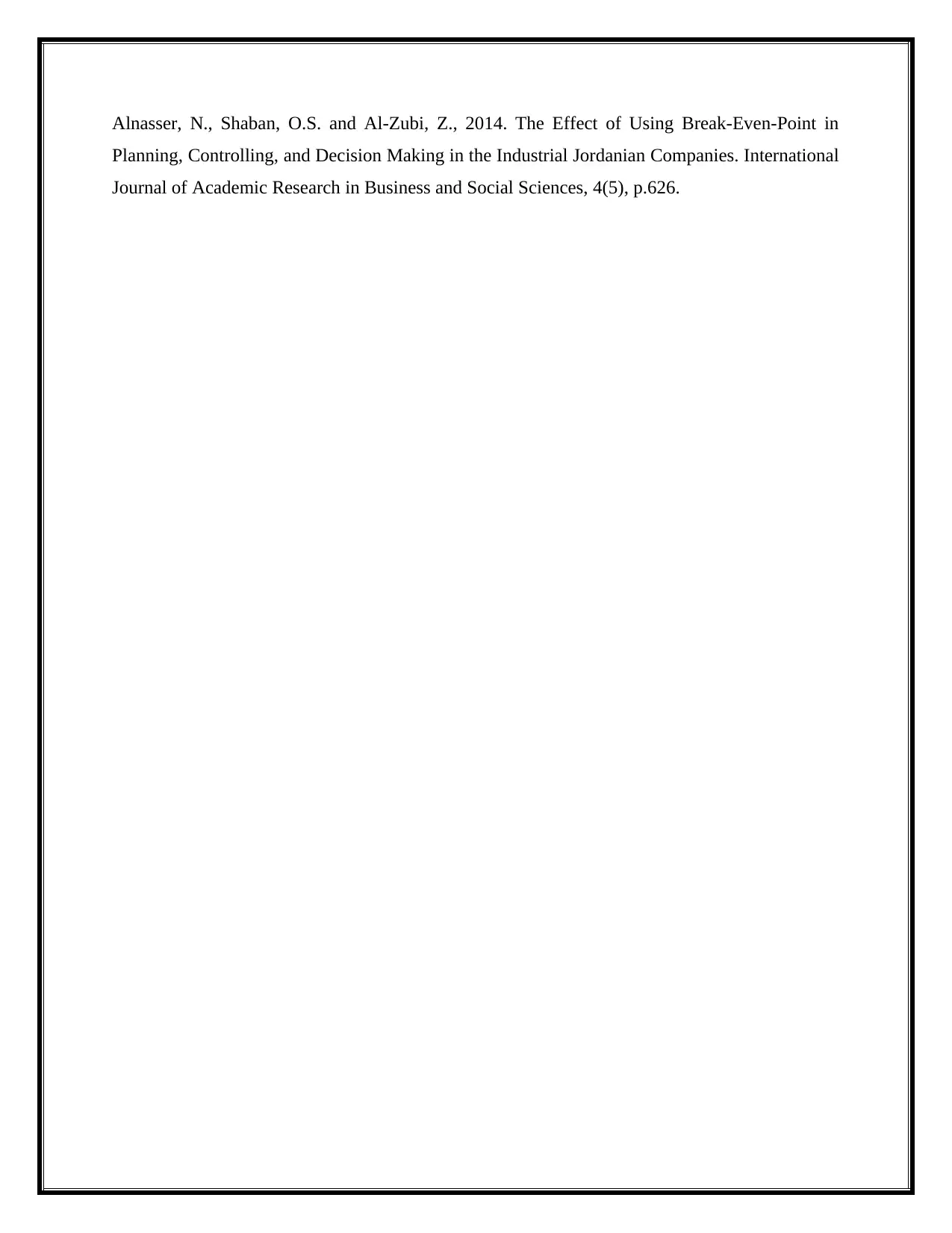
Alnasser, N., Shaban, O.S. and Al-Zubi, Z., 2014. The Effect of Using Break-Even-Point in
Planning, Controlling, and Decision Making in the Industrial Jordanian Companies. International
Journal of Academic Research in Business and Social Sciences, 4(5), p.626.
Planning, Controlling, and Decision Making in the Industrial Jordanian Companies. International
Journal of Academic Research in Business and Social Sciences, 4(5), p.626.
1 out of 7
Related Documents
Your All-in-One AI-Powered Toolkit for Academic Success.
+13062052269
info@desklib.com
Available 24*7 on WhatsApp / Email
![[object Object]](/_next/static/media/star-bottom.7253800d.svg)
Unlock your academic potential
Copyright © 2020–2025 A2Z Services. All Rights Reserved. Developed and managed by ZUCOL.




